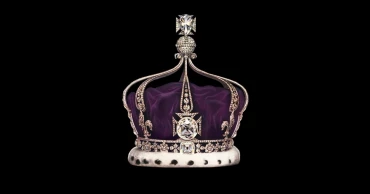Guardian Report
14-year-old wins award for developing soap to treat skin cancer
A 14-year-old school student has been termed "America's top young scientist" for creating a bar of soap that may be effective in the treatment of melanoma, a skin cancer that affects roughly 100,000 individuals in the United States each year and kills approximately 8,000.
Heman Bekele, a ninth-grader from Annandale, Virginia, was selected over nine other finalists for the award, reports The Guardian.
Also read: The next big advance in cancer treatment could be a vaccine
“Curing cancer, one bar of soap at a time,” he said in his submission. “I have always been interested in biology and technology, and this challenge gave me the perfect platform to showcase my ideas,” he added.
He submitted his soap idea, "skin cancer treating soap," produced from ingredients that may reawaken dendritic cells that defend human skin, allowing them to combat cancer cells. Bekele stated in a video for the 3M Young Scientist Challenge that he believes "that young minds can make a positive impact on the world," the report said.
Also read: New AI model can accurately diagnose cancer: Study
Bekele's inspiration stemmed from his childhood in Ethiopia, where he saw people continually labouring under the blazing sun. “I wanted to make my idea something that not only was great in terms of science but also could be accessible to as many people as possible.”
Skin cancer is quite common, according to the American Cancer Society, with melanoma accounting for only 1 percent, yet causing the bulk of skin cancer deaths, the report also said.
Also read; Ancient viruses can help fight cancer, scientists say
According to the association, melanoma rates have been significantly increasing over the last few decades, particularly among women over 50, and it is more than 20 times more prevalent in white people than in black people. At the same time, owing to breakthroughs in therapy, melanoma death rates have decreased over the last decade.
After receiving the award, Bekele told the judging panel that he hoped the soap would become a "symbol of hope, accessibility, and a world where skin cancer treatment is within everyone's reach."
2 years ago
Groundbreaking: Scientists create first human synthetic model embryos
In a groundbreaking development, scientists have generated synthetic human embryos using stem cells that sidestep the need for eggs or sperm, The Guardian reports.
These model embryos, which mirror those in the earliest stages of human development, may offer a significant insight into the effects of genetic anomalies and the biological factors that contribute to recurrent miscarriage, according to scientists.
Since lab-grown entities are illegal in the UK and most other nations, the development also poses significant ethical and legal concerns.
The structures contain cells that would ordinarily develop into the placenta, yolk sac, and embryo itself but lack a beating heart and the beginnings of a brain, reports the Guardian.
Also read: Scientists say taurine, present in meat, may extend life
Prof Magdalena Żernicka-Goetz, of the University of Cambridge and the California Institute of Technology, described the work in a plenary address on Wednesday at the International Society for Stem Cell Research’s annual meeting in Boston.
“We can create human embryo-like models by the reprogramming of [embryonic stem] cells,” she told the meeting.
According to The Guardian, the use of synthetic embryos in clinical trials is not anticipated to happen anytime soon. It is currently unknown if these structures have the ability to continue maturing past the initial stages of development, making their implantation into a patient's womb illegal.
The goal of the research is to help scientists better comprehend the so-called "black box" period of development, which lasts for only 14 days in accordance with regulatory restrictions. They then pick up the development's course at a far later stage by examining donated embryos and pregnancy scans.
Also read: Alzheimer's drug gets FDA panel's backing, setting the stage for broader use
“The idea is that if you really model normal human embryonic development using stem cells, you can gain an awful lot of information about how we begin development, what can go wrong, without having to use early embryos for research,” Robin Lovell-Badge, the head of stem cell biology and developmental genetics at the Francis Crick Institute in London, told The Guardian.
Previously, Żernicka-Goetz’s team and a rival group at the Weizmann Institute in Israel showed that stem cells from mice could be encouraged to self-assemble into early embryo-like structures with an intestinal tract, the beginnings of a brain and a beating heart.
Since then, a race has been under way to translate this work into human models, and several teams have been able to replicate the very earliest stages of development.
The current research from the Cambridge-Caltech lab has not yet been fully described in a scholarly article. However, addressing at the conference, Ernicka-Goetz recounted growing the embryos to a level barely past the point at which a natural embryo would develop after 14 days.
Also read: Did humans 3000 years ago have bigger brains than us?
The model structures, which were each developed from a single embryonic stem cell, have begun to undergo gastrulation, a developmental stage in which the embryo changes from being a continuous sheet of cells to generating discrete cell lines and establishing the basic axis of the body, the Guardian reports, citing Ernicka-Goetz.
The model demonstrated the presence of primordial cells, which are the precursor cells of egg and sperm, although the embryo at this stage does not yet have a beating heart, a functioning gut, or the beginnings of a brain.
The development highlights how rapidly the science in this field has outpaced the law, and scientists in the UK and elsewhere are already moving to draw up voluntary guidelines to govern work on synthetic embryos. “If the whole intention is that these models are very much like normal embryos, then in a way they should be treated the same,” Lovell-Badge told the Guardian. “Currently in legislation they’re not. People are worried about this.”
Read more: Scientists say taurine, present in meat, may extend life
2 years ago
Parents in Irish town unite in banning smartphones for children
In a stunning show of unity, parents in a town in Ireland have banded together to jointly adopt a no-smartphone code for their children until secondary school.
Parents’ associations across the Irish town of Greystones have adopted the no-smartphone code for their children, the Guardian reports.
“If everyone does it across the board, you don’t feel like you’re the odd one out. It makes it so much easier to say no,” said Laura Bourne, one of the parents. “The longer we can preserve their innocence, the better.”
Read more: How to Break Internet Addiction?
Last month, schools and parents in the town of Greystones in Ireland took the initiative out of concern that smartphones were fueling anxiety and exposing children to adult content. It is a rare occasion for an entire town to take action together on such an issue, the Guardian reports.
The voluntary “Greystones Pact” is to withhold smartphones from children – at home, in school, everywhere – until they enter secondary school. Applying it to all children in the area will, it is hoped, curb peer pressure and dampen any resentment.
“Childhoods are getting shorter and shorter,” Rachel Harper, the principal of St Patrick’s School who led the initiative, told the Guardian. Nine-year-olds had started requesting smartphones, she said.
Read more: How to keep your child engaged at home without gadgets
“It was creeping in younger and younger, we could see it happening.”
A town-wide policy reduces the chance of a child having a peer with a smartphone and parents can present the code as a school rule, said Harper. “They love it – now they can blame the schools.”
The initiative has garnered interest from parent associations in Ireland and internationally, prompting Ireland's health minister, Stephen Donnelly, to recommend it as a national policy.
Read more: Effects of Excessive Use of Smartphones
“Ireland can be, and must be, a world leader in ensuring that children and young people are not targeted and are not harmed by their interactions with the digital world,” he wrote in the Irish Times. “We must make it easier for parents to limit the content their children are exposed to.”
The “Greystones Pact” stemmed from children showing anxiety levels only partly attributable to Covid-era adaptation, Harper told the Guardian.
Schools circulated questionnaires among parents, leading to a meeting of community stakeholders and an initiative dubbed “it takes a village”.
Read more: How to entertain an unwell child without screen time
Not all parents will deny their primary schoolchildren a smartphone – the code is voluntary – but enough have signed up to create a sense of critical mass, said Harper. “Hopefully down the line it’ll become the new norm,” she told the Guardian.
2 years ago
India shaping up campaign to reclaim historical artefacts looted in colonial era, UK media reports
Indian Prime Minister Narendra Modi and other diplomats are reportedly gearing up for a campaign later this year to reclaim items in British museums and held by the royal family, The Guardian reports citing the Daily Telegraph.
The items include the controversial Koh-i-noor diamond, which is held by the royal family and has featured in discussions about its potential use in the coronation; the treasures of Tipu Sultan, which are in the Victoria and Albert Museum and Powis Castle; and the Amaravati Marbles.
India’s actions are part of a larger reconsideration of its former colonial status. Modi has encouraged school classes to be taught in Hindi and other languages rather than English, India's parliament is being rebuilt and its MPs are preparing to move out of the Edwin Lutyens-designed colonial era building, and roadways named after former British monarchs have been renamed, according to the report.
Read more: Now that the Queen is dead, will India get Kohinoor back?
Meanwhile, The Telegraph quoted Govind Mohan, secretary for the Indian ministry of culture, saying returning antiquities is going to be a key part of future policy. “It is of huge importance to the government,” he said. “The thrust of this effort to repatriate India’s artefacts comes from the personal commitment of the prime minister, Narendra Modi, who has made it a major priority.”
The issue has previously received attention alongside disputes that include the potential return of the Elgin marbles to Greece.
Former Conservative prime ministers and culture secretaries have rebuffed requests for the return of artefacts. During his 2013 visit to India, David Cameron stated that the return of the Koh-i-noor was not the “right approach,” according to The Guardian.
The report also quoted a leading author on the British empire regarding the issue.
Read more: National Museum to send proposal for including palm leaf scroll etching as UNESCO cultural heritage: KM Khalid
Sathnam Sanghera, who authored “Empireland: How Imperialism Has Shaped Modern Britain”, believes the Indian jewels and other historical artefacts looted during the British colonial era will be returned “inevitably.”
He said the latest demands are part of a series by former colonies reassessing their own time under the empire.
Sanghera said, “Our museums and the royal family are in possession of billions of pounds worth of Indian loot. It was a systematic part of colonial rule. The royal family was given the king’s share of that loot. When we annexed parts of India and Burma [now Myanmar], there were representatives of our museums there to take things, soldiers took loot and sold it, too.
“It’s not just the financial value of these items, there is also the emotional and religious value.
Read more: French honour for Nadia Samdani: Receives Knight of the Order of Arts and Letters medal
“These countries are future superpowers or superpowers already, they are not going to shut up about it,” the writer told The Guardian.
On the issue of returning Koh-i-noor, Sanghera agrees that the item is controversial in its own right, with multiple claims on its ownership.
“I think it is impossible. There will be anger by the Sikhs if the Hindu nationals get it. It is unsolvable,” he said.
Museums are constrained by law to keep their collections intact. However, charities such as the National Trust who are not subject to the same legal restrictions may be approached first.
Read more: Tracing the Roots of Ekushey Boi Mela
Sanghera said, “In the next 10 years, it will totally change. Young people in Britain feel the same way about loot in museums as we felt about animals in zoos. They can’t quite believe it is allowed. I think it is inevitable.”
Countries such as India are altering historical legacies of colonial rule, which ended in 1947, and an official tour of the Caribbean by the Prince and Princess of Wales in 2022 was marked by demands for slavery reparations from the days of the British empire.
2 years ago
Priyanka Chopra says Bollywood’s obsession with fair skin contributed to her departure
Indian actor Priyanka Chopra Jonas has said that Bollywood’s everlasting “obsession with fair skin” was one of the reasons she left the industry to try her luck in Hollywood eight years ago.
Priyanka, also a former Miss World, was at the height of her success in India’s Bollywood when she unexpectedly declared her decision to relocate to the United States, reports The Guardian.
The actress had previously declined to clarify her reasons for leaving Bollywood, but recently told Dax Shepard on the podcast “Armchair Expert” that she was “tired of the politics and certain cliques” that needed to be “grovelled” to.
Priyanka described how “dark skinned” actresses, such as her, were treated in Bollywood.
Read More: True story behind Rani Mukerji’s latest film “Mrs Chatterjee Vs Norway”
“I was lightened up in many movies. Through makeup and then blasting lighting. There was a song which I still remember. It was called Chitti Dudh Kudi which means a girl who is as white as milk and I ain’t that but I was playing her and I was really lightened up in the movie,” she was quoted as saying.
Priyanka Chopra said that fair-skinned actresses had a higher chance of getting picked for lead roles and succeeding, and that even a celebrity like her suffered prejudice. “If you were darker – I’m not even that dark – for darker girls it was: ‘Let’s lighten you up’.”
Priyanka, who is married to American musician and actor Nick Jonas, expressed guilt for appearing in an early advertisement for a fairness cream, said the Guardian report.
She now believes that such advertisements are harmful to the self-esteem of Indians with dark complexion. She said she then agreed to the ad because big cosmetic companies give prominence and revenue for female celebrities. “A beauty brand is a really big part of an actress’s trajectory,” she said.
Read More: Oscars 2023: Vogue misidentifies Deepika Padukone as Camila Alves
Moving to Hollywood is risky for Indian actors, but Priyanka has had success – appearing in US TV shows such as “Quantico” and starring in the film “The White Tiger”.
Priyanka has maintained a large fan base in India, and her comments have gained widespread attention. They are unlikely to alter much, either in the Bollywood film industry or in wider society, where light skin is still regarded as more attractive, the report said.
2 years ago









